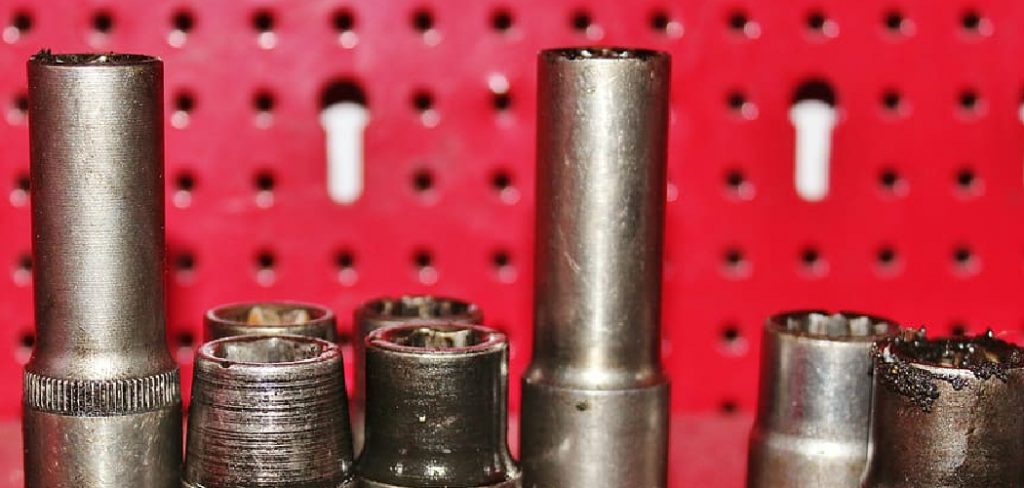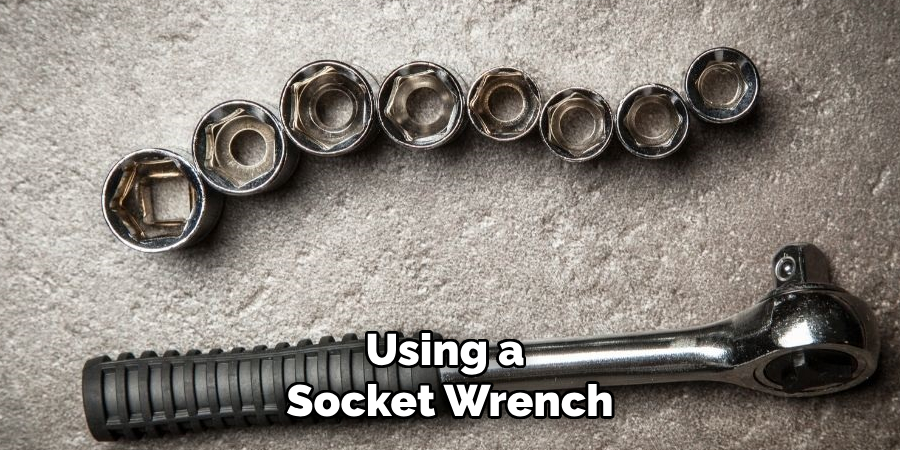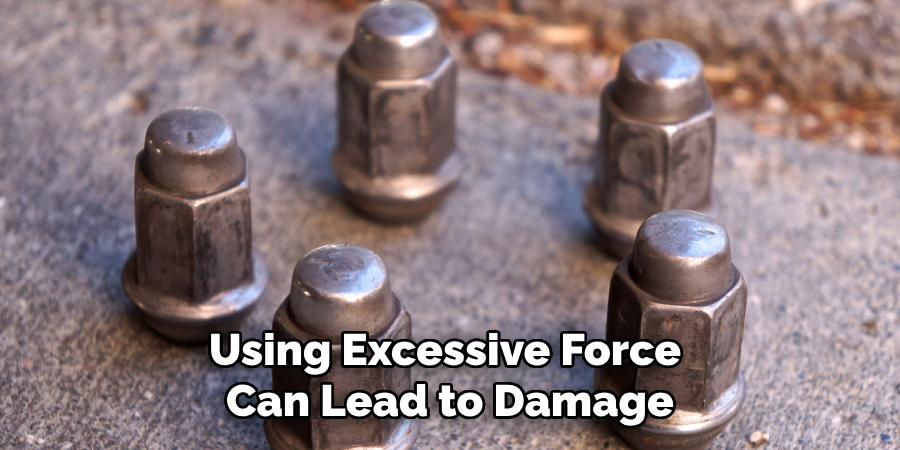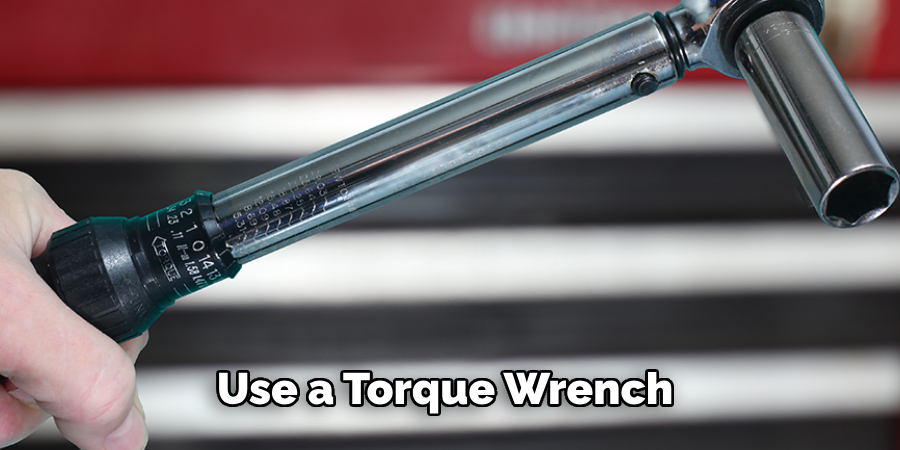Getting a lug nut out of a socket may seem like a daunting task, but it is actually quite simple once you know the right techniques. Whether you are an experienced mechanic or someone who likes to do their own car repairs, knowing to get a lug nut out of a socket can save you time and frustration.

The main advantage of getting a lug nut out of a socket is that it allows you to remove a stuck or damaged lug nut without damaging the socket or wrench. This can save you money as you won’t need to constantly replace tools that have been damaged while trying to remove a stubborn lug nut. In this blog post, You will learn in detail how to get a lug nut out of a socket.
Step-by-step Instructions for How to Get a Lug Nut Out of a Socket
Step 1: Inspect the Lug Nut and Socket
Before attempting to remove the lug nut from the socket, it is important to assess the situation. Look at both the lug nut and socket for any signs of damage or wear. If either appears damaged, it may require special tools or techniques for removal.
Step 2: Gather Necessary Tools
To successfully remove a lug nut from a socket, you will need a few tools. These include a lug nut wrench or socket wrench, penetrating oil, and possibly a hammer or mallet.
If the lug nut is stuck in the socket, applying some penetrating oil can help loosen it. Spray the oil onto the lug nut and let it sit for several minutes to allow it to work its way into any corrosion or grime that may be causing the lug nut to stick.
Step 3: Use a Socket Wrench
Using a socket wrench, try to loosen the lug nut by turning it counterclockwise. If the lug nut is still stuck, you can use a breaker bar for extra leverage.

If penetrating oil and a socket wrench are not enough to loosen the lug nut, heat may do the trick. Use a propane torch or heat gun to apply heat directly to the lug nut. This will cause it to expand slightly, making it easier to remove.
Step 4: Use a Hammer
Another option for removing a stuck lug nut is using a hammer or mallet. Place the socket wrench over the lug nut and use a hammer to tap it lightly. This can help break up any corrosion or rust that is keeping the lug nut stuck.
If none of the above methods work, you may need to turn to a specialized tool designed specifically for removing stuck lug nuts from sockets. These tools typically grip onto the lug nut and allow you to use extra leverage to remove it.
Step 5: Use a Vice Grip Pliers
A pair of vice grip pliers can also be helpful in removing a stuck lug nut. Clamp the pliers onto the lug nut and use them as leverage to turn it counterclockwise.
If you are still struggling to remove the lug nut, secure the socket in a vice and use a breaker bar or hammer to turn it counterclockwise. This will provide extra stability and leverage.

Step 6: Replace the Lug Nut and Socket if Necessary
If all else fails, it may be necessary to replace both the lug nut and socket. Over time, they can become too worn or damaged to safely remove a lug nut. Be sure to replace them with high-quality, durable replacements.
By following these step-by-step instructions, you can successfully remove a lug nut from a socket without causing damage or frustration. Remember to always assess the situation before attempting any removal methods and use caution when using tools such as heat or hammers.
Safety Tips for How to Get a Lug Nut Out of a Socket
- Always wear protective gear, such as gloves and safety glasses, when attempting to remove a lug nut from a socket. This will protect your hands and eyes from any debris or flying pieces that may result from the removal process.
- Be mindful of the amount of force you are using when trying to loosen a stuck lug nut. Applying too much force can damage the socket or cause injury.
- If using heat, always make sure to follow safety precautions and never use an open flame near any flammable materials or liquids.
- Use caution when tapping a socket wrench with a hammer as it can cause damage to the wrench or socket if too much force is applied.
- Do not attempt to remove a lug nut from a socket while the wheel is still attached to the vehicle. Always make sure to safely lift and secure the vehicle before attempting any repairs.
- If you are unsure or uncomfortable with any of the removal methods, seek assistance from a professional mechanic for safe and proper lug nut removal.
- Regularly inspect and maintain your lug nuts and sockets to prevent them from becoming stuck in the future. This includes cleaning off any dirt or debris and replacing any worn or damaged parts.

By following these safety tips, you can ensure a smooth and safe lug nut removal process.
Are There Any DIY Methods to Remove a Stuck Lug Nut Without Specialized Tools?
When it comes to changing a tire, one of the most frustrating roadblocks can be a stuck lug nut. Not only does this add extra time and effort to the process, but it can also potentially damage your vehicle if not handled properly. Luckily, there are some DIY methods that you can try before resorting to specialized tools.
Firstly, it’s important to understand why lug nuts can get stuck in the first place. The most common reason is rust and corrosion, which can be caused by exposure to moisture and dirt over time, especially on older vehicles. Another cause could be over-tightening of the lug nut during installation, making it difficult to remove.
To begin with, you can try applying some penetrating oil or lubricant around the lug nut and letting it sit for a few minutes. This can help to loosen the rust or dirt, making it easier to remove. You may need to tap the lug nut lightly with a hammer while applying pressure on your wrench in order to break it loose.
What Are the Potential Risks of Using Excessive Force When Trying to Remove a Lug Nut From a Socket?
When dealing with stubborn lug nuts, it can be tempting to apply excessive force in hopes of loosening them. However, before you reach for that breaker bar and put all your strength into trying to remove the lug nut from its socket, there are some potential risks you should consider.
Firstly, using excessive force can lead to damage to both the lug nut and the socket. If you apply too much force, you could strip the lug nut or round off its edges, making it even more difficult to remove. Similarly, applying excessive force can also damage the socket itself, causing it to become distorted or deformed. This can render the socket unusable and may require expensive replacements.

Furthermore, using excessive force can also result in injury to yourself or others. If the lug nut suddenly gives way, there is a risk of causing harm to your hands, fingers, or wrists from the sudden release of tension. Additionally, using too much force can cause the tool you are using to slip and potentially hit you or someone else nearby.
How Can You Prevent a Lug Nut From Becoming Stuck in the Socket in the First Place?
Lug nuts are an integral part of any vehicle’s wheel, ensuring that the wheels stay securely attached to the axles. However, over time, lug nuts can become worn or damaged due to exposure to extreme temperatures or corrosive materials. When this happens, it becomes a challenge to remove them from their sockets. Here are some tips to help you avoid this situation:
1. Clean and Lubricate Your Lug Nuts Regularly
One of the main reasons why lug nuts become difficult to remove is due to the buildup of dirt, dust, and rust in the socket. To prevent this from happening, make sure to clean your lug nuts regularly with a wire brush or steel wool. Additionally, lubricate them using an appropriate lubricant to reduce friction and make them easier to remove.
2. Use a Torque Wrench When Tightening Your Lug Nuts
Over-tightening lug nuts can cause them to seize in the socket, making it hard to remove them. To avoid this, use a torque wrench when tightening your lug nuts and follow the recommended torque settings for your vehicle.

3. Replace Damaged or Worn Out Lug Nuts Immediately
If you notice that one or more of your lug nuts are damaged or worn out, replace them immediately. This will prevent them from becoming stuck in the socket and causing problems when you need to remove them.
4. Avoid Using an Impact Wrench
While impact wrenches make it faster and easier to tighten lug nuts, they can also cause over-tightening which may result in a stuck lug nut. Whenever possible, use hand tools or a torque wrench instead.
5. Clean and Inspect Lug Nut Sockets Regularly
Just like with the lug nuts, the sockets can also accumulate dirt, rust, and debris over time. Make it a habit to clean and inspect them regularly to ensure they are in good condition.
By following these simple tips, you can prevent your lug nuts from becoming stuck in their sockets, saving you time and frustration in the long run. Remember, prevention is always better than cure. So take care of your lug nuts and they will take care of you on the road.

Are There Any Specific Techniques or Tricks for Removing Lug Nuts From Deep Sockets?
Sometimes, lug nuts may become stuck in deep sockets, making them even harder to remove. In such cases, there are a few techniques or tricks that you can try:
- Use penetrating oil: Applying a small amount of penetrating oil to the stuck lug nut and letting it sit for a few hours can help loosen it up. This will make it easier to remove with a socket wrench or breaker bar.
- Heat the nut: Using a heat gun or blowtorch, you can heat up the stuck lug nut to expand it and break its bond with the socket. Be careful not to overheat it, as this may cause damage to other components of your vehicle.
- Use a lubricant and impact driver: Lubricate the lug nut with penetrating oil and use an impact driver to give it sharp impacts. This combination of lubricant and force often helps to break the lug nut loose.
- Try a hammer and chisel: If all else fails, you can try using a hammer and chisel to tap on the side of the lug nut in a counter-clockwise direction. This will help loosen its grip on the socket, making it easier to remove.
Remember to always apply force in a counter-clockwise direction when trying to loosen a lug nut. Applying clockwise force will only tighten the nut further and make it harder to remove. Additionally, be mindful of your safety and use caution when using tools or applying force.
Conclusion
In conclusion, we have discussed the different methods on getting a lug nut out of a socket. As we have seen, there are multiple techniques that can be used depending on the situation and tools on hand. Some methods may be easier than others, but it is important to choose the right technique in order to avoid damaging your lug nut or socket.
However, despite these various methods, there are some potential disadvantages to keep in mind. For instance, using heat or torque can potentially cause damage to the lug nut or socket if not done properly. Also, certain techniques may only work on specific types of lug nuts and sockets, so it is important to know what type you are dealing with before attempting any removal method. I hope this article has been beneficial for learning how to get a lug nut out of a socket. Make Sure the precautionary measures are followed chronologically.
Occupation: Expert in Hardware Tools
Education: Bachelor’s Degree in Mechanical Engineering
Profile:
Enrique Howard is a seasoned expert in the field of hardware tools, with a robust background in mechanical engineering that underpins his extensive knowledge and skills. Holding a degree in mechanical engineering, Enrique has cultivated a deep understanding of tool design, mechanics, and the intricacies of various hardware applications. His educational foundation empowers him to innovate and refine tools that enhance efficiency and effectiveness in a wide range of industries.
Professional Focus:
Enrique’s professional focus encompasses a diverse array of areas within the hardware tools sector, including:
- Tool Design and Development: Leveraging his engineering expertise, Enrique specializes in designing tools that meet specific user needs, ensuring optimal performance and durability.
- Material Science: Understanding the properties of various materials allows him to recommend the best tools for specific applications, enhancing safety and efficiency.
- Ergonomics: He emphasizes the importance of ergonomic design in tools, striving to create solutions that reduce user fatigue and improve comfort during prolonged use.
- Sustainability: Enrique is committed to promoting environmentally friendly practices in tool manufacturing, advocating for the use of sustainable materials and processes.
- Education and Training: Through workshops, seminars, and written content, he focuses on educating both professionals and DIY enthusiasts about tool selection, maintenance, and safe usage practices.
Throughout his career, Enrique has worked on numerous projects, collaborating with manufacturers and craftsmen to develop cutting-edge hardware solutions. His expertise spans from traditional hand tools to advanced power tools, allowing him to contribute significantly to both professional and DIY communities.
As an author, Enrique shares his insights through articles, guides, and tutorials, aimed at helping enthusiasts and professionals alike navigate the complexities of hardware tools. His passion for education and practical application drives him to continually explore new technologies and methodologies, making him a trusted voice in the hardware industry.
Whether he’s writing about the latest tool advancements or providing practical tips for tool maintenance, Enrique Howard is dedicated to empowering others with the knowledge and skills necessary to excel in their hardware endeavors.
